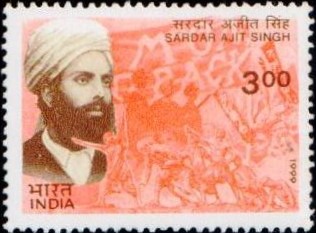
Sardar Ajit Singh
A commemorative postage stamp on Sardar Ajit Singh Sandhu, an Indian revolutionary & nationalist, uncle of Sardar Bhagat Singh [a part of the series ‘India’s Struggle for Freedom‘] :

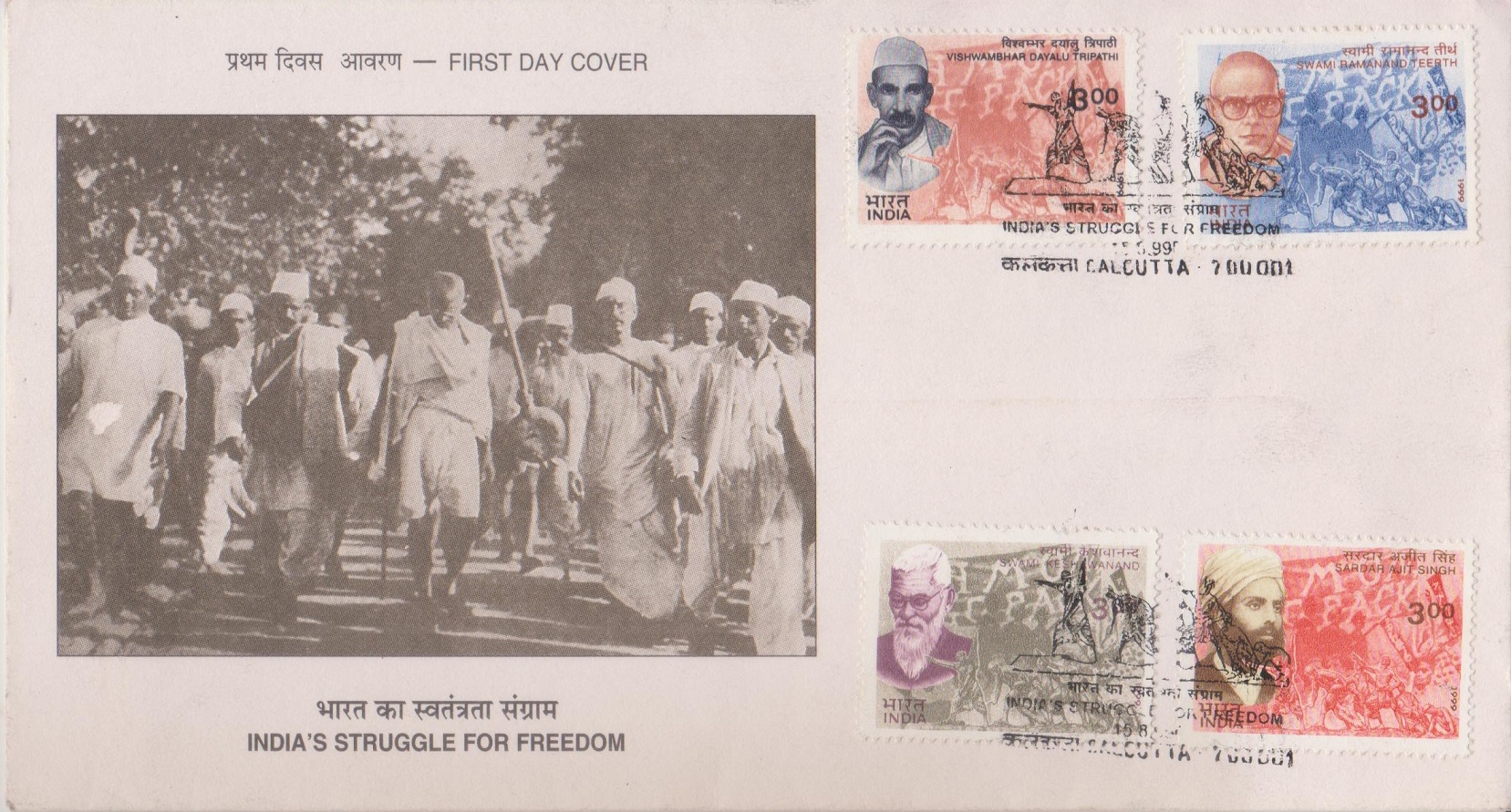 Issued by India
Issued by India
Issued on Aug 15, 1999
Issued for : The Department of Posts is privileged to issue this set of commemorative stamps as its homage to some of the leaders of the struggle for Freedom.
Design : The stamp designs symbolically depict the contributions of Sardar Ajit Singh, Swami Ramanand Teerth, Swami Keshawanand and Vishwambhar Dayalu Tripathi towards India‘s struggle for freedom. The first day cover shows a memorable scene from the freedom struggle, the ‘Dandi March‘.
Credits :
Stamp : Maj. S. Ramachand, (Retd.) V&M Communications
FDC : Sankha Samantha
Cancellation : Alka Sharma
Type : Stamp, Mint Condition
Colour : Two Colour
Denomination : 300 Paise
Overall size : 3.91 x 2.90 cms.
Printing size : 3.55 x 2.54 cms.
Perforation : 13 x 13
Paper : Imported un w/m Adhesive Gravure Coated Stamp Paper in Sheets 50.8 x 53.5 cms.
Stamps Printed : 0.4 Million
Number per issue sheet : 35
Printing Process : Photogravure
Printer : India Security Press, Nashik
Name : Sardar Ajit Singh Sandhu
Born on Feb 2, 1881 at Khatkar Kalan, Shahid Bhagat Singh Nagar district, Punjab, India
Died on Aug 15, 1947 at Dalhousie, Himachal Pradesh, India
About :
- India‘s struggle for freedom was a movement of national resurgence which brought the people together, in a mass movement spread almost across a century, united by the concept of Indian Nationhood. The struggle produced outstanding leaders from every part of the country, in every period of its long history. The Department of Posts has over the years, depicted the history of the Struggle for Freedom through postage stamps, paying tribute to the sacrifices of the martyrs of the struggle and the various places of the Movement. This set of 4 stamps continues the series, honouring the memory of Sardar Ajit Singh, Swami Ramanand Teerth, Swami Keshawanand and Vishwambhar Dayalu Tripathi.
- Sardar Ajit Singh ( -1947) (date of birth not known) hailed from Jallandhar District of Punjab and rose to prominence with a fiery speech in Rawalpindi in 1907, attacking the Government’s policy of increased land revenue assessment. He was arrested and deported to Mandalay in Burma for six months. After his release, Ajit Singh became more active in building up the revolutionary movement with publications such as: “Peshwa” which was banned and then published under different names such as ‘Bharat Mata‘, ‘Sahaik‘ etc. He also published a number of pamphlets and established a revolutionary society called ‘Bharat Mata Society‘. When it became certain that the Government would arrest him again, he fled to Persia. Later he widened his area of activity to Europe, South America and the United States and continued to work for the cause of India‘s Independence. During the Second World War he had to undergo imprisonment in Italy and Germany. Finally released, he was allowed to return to India. He died on the day the country attained Independence. His dying words were, “Thank God my mission is fulfilled“.
- Text : Incorporating material from National Biography by S.P. Sen.


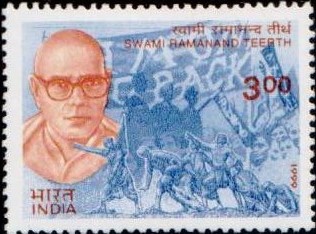
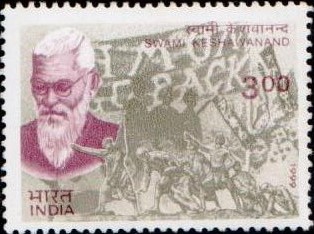

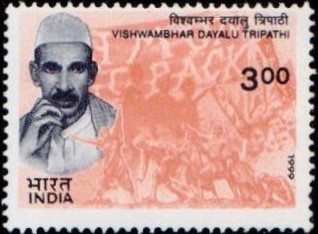

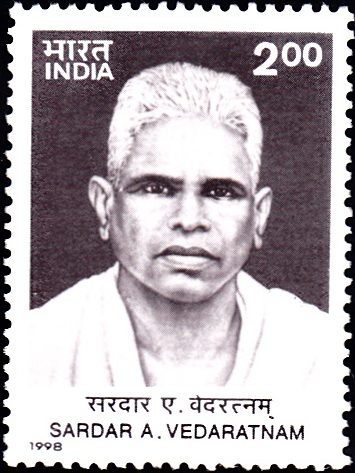
[…] good relations with well known Congress leaders and freedom fighters of those days including Sardar Ajit Singh, uncle of Sardar Bhagat Singh, Lala Hardayal and Lala Lajpat Rai. He witnessed the Jalliwanwala […]